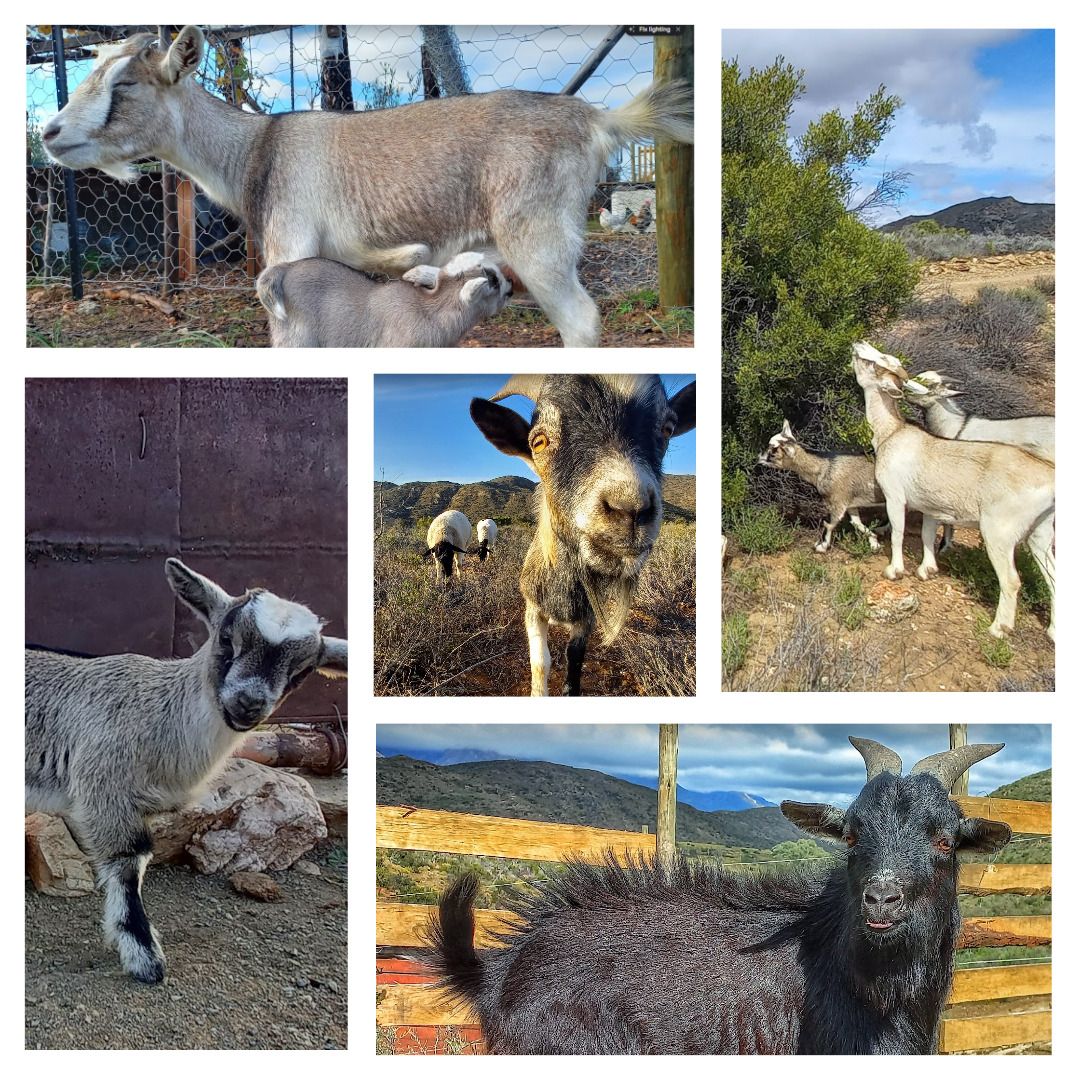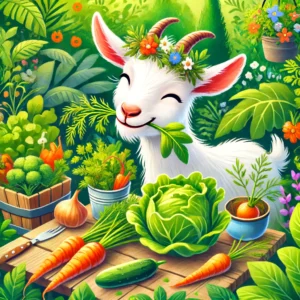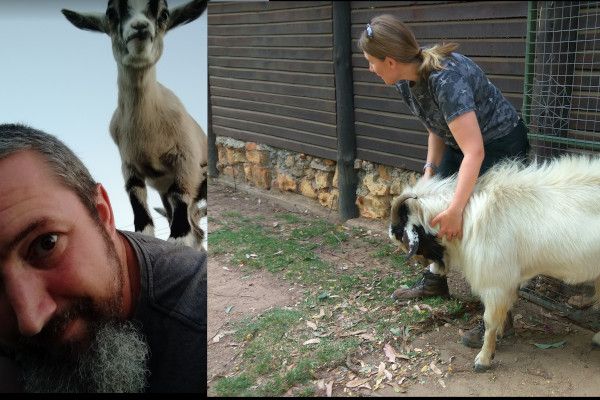New to the world of goats, or just catching up on info?
No worries—your interest in them is already a positive sign! We’re not professors, but Alexia and I have a decade of goat experience we’d like to share (and then learn some from you, too)
So, what do these fascinating creatures need, eat, and do? While you could go all out and construct a lavish goat hotel, their needs are quite simple: safety and comfort are paramount. Nigerian Dwarf goats, for instance, aren’t fans of rain; even a few drops can send them scurrying back to the kraal. The veld goats are not too worried about getting a little damp, or so they try to convince us. Providing a shelter with a sturdy roof is essential, offering protection from rain, chilly winds, and the scorching summer sun. While grazing, they’ll seek shade as necessary and may return to the kraal periodically throughout the day. Our shelters, sized at approximately 3×3 meters per ten dwarf goats (or three veld goats), promote a cozy huddling atmosphere, especially during winter months. Newborn kids are remarkably resilient to both hot and cold weather, provided they’ve dried off before facing frosty winds.
Our experience has shown that goats are quite adept at giving birth even on rainy winter nights, typically without issue. Funny enough, in afrikaans there is a term “boklam-weer”, which translates to “goat kid weather”; it’s the absolute worst weather. Our opinion is that they do this to spite us 🙂
While it’s best not to interfere with the birthing process, being present to offer assistance if needed is perfectly acceptable—and even advisable. Labour can span several hours and may initially be stressful for both the doe and yourself. Grab a chair, watch and learn. If things go weird, you can step in. Some folks like to call a vet to come around and help, but Alexia learnt to handle these situations herself. You do whatever you are comfortable with. In the end, there are almost never issues.
Maintaining a fresh, cool water supply is crucial, occasionally supplemented with electrolytes or vitamins to support them during extreme weather conditions. Goats are browsers by nature, nibbling on various vegetation as they roam. While they generally avoid toxic plants, it’s wise to monitor and manage their surroundings. Ensuring a nutritious feed is available encourages them to consume the right foods. There’s some things they won’t eat, because they can be fussy. There’s other things they shouldn’t eat (like Kraalbos), but ours never tried. One bite and they walk away. You will have to do some homework on your area, learn about what’s around and enjoy the bonus floral knowledge you will gain about your land.
Remember that keeping your goats happy and healthy, means that they will produce and perform at their best, too. Bred responsibly, from no younger than one year old, they are able to produce twins most of the time. They are good dairy providers, and can even be further bred for dairy conformity. The high butterfat and protein percentage of the milk makes it very suitable for culinary use, cheese-making and drinking (which is also healthier and stays in the human stomach for much shorter than cow milk). While not common, they are formiddable quality meat producers for their size, if this is your inclination. They are alert, protective to the herd and juveniles (up to a point, where they start getting annoyed with them). Keeping them healthy and happy is a matter of feeding them correctly, giving them space and keeping an eye on them. Proper animal husbandry counts for you, here.


 Our feeding approach is straightforward: when goats are introduced to a new area, we keep them confined for a couple of weeks, providing enticing treats daily at the same time. This teaches them that rewards await at day’s end. In the veld, they graze among acacia trees, renosterbos, grasses, and assorted shrubs. Upon returning to the kraal, they’re offered roughage and pellets to maintain optimal health. The pellets are like ice-cream to them. Crushed mielies are extremely popular in the goat kraals, but do limit the intake. Too much corn/mielies is a bad thing, as it could cause acidoses, bloat and things like laminitis (unpleasant hoof inflammation). Corn is also low in fibre, but aids with weight gain. We give a tiny bit of crushed corn every day, to reward them for coming back at the same time daily. It also contains a lot of energy and helps them warm up a bit on icy nights.
Our feeding approach is straightforward: when goats are introduced to a new area, we keep them confined for a couple of weeks, providing enticing treats daily at the same time. This teaches them that rewards await at day’s end. In the veld, they graze among acacia trees, renosterbos, grasses, and assorted shrubs. Upon returning to the kraal, they’re offered roughage and pellets to maintain optimal health. The pellets are like ice-cream to them. Crushed mielies are extremely popular in the goat kraals, but do limit the intake. Too much corn/mielies is a bad thing, as it could cause acidoses, bloat and things like laminitis (unpleasant hoof inflammation). Corn is also low in fibre, but aids with weight gain. We give a tiny bit of crushed corn every day, to reward them for coming back at the same time daily. It also contains a lot of energy and helps them warm up a bit on icy nights.
